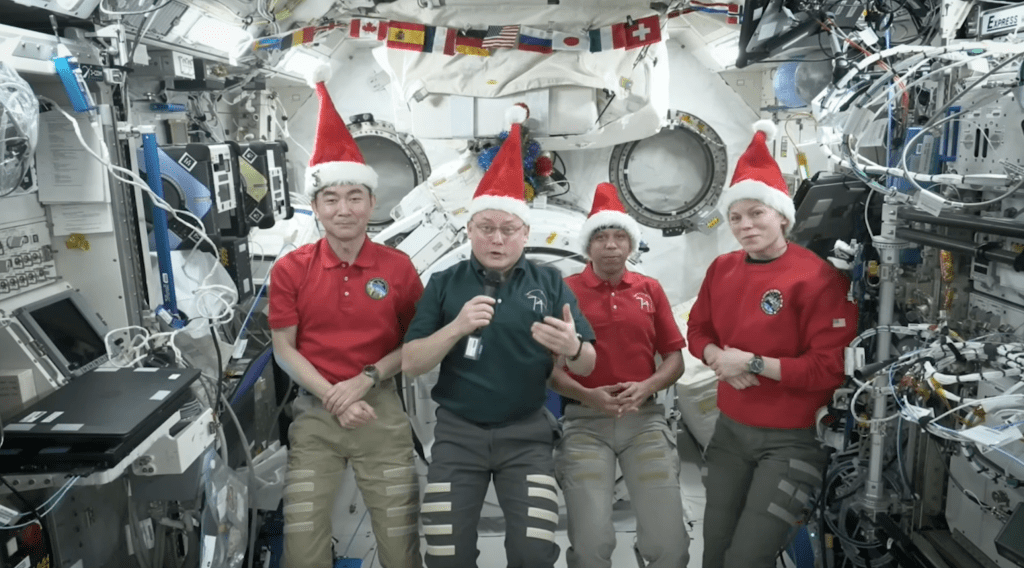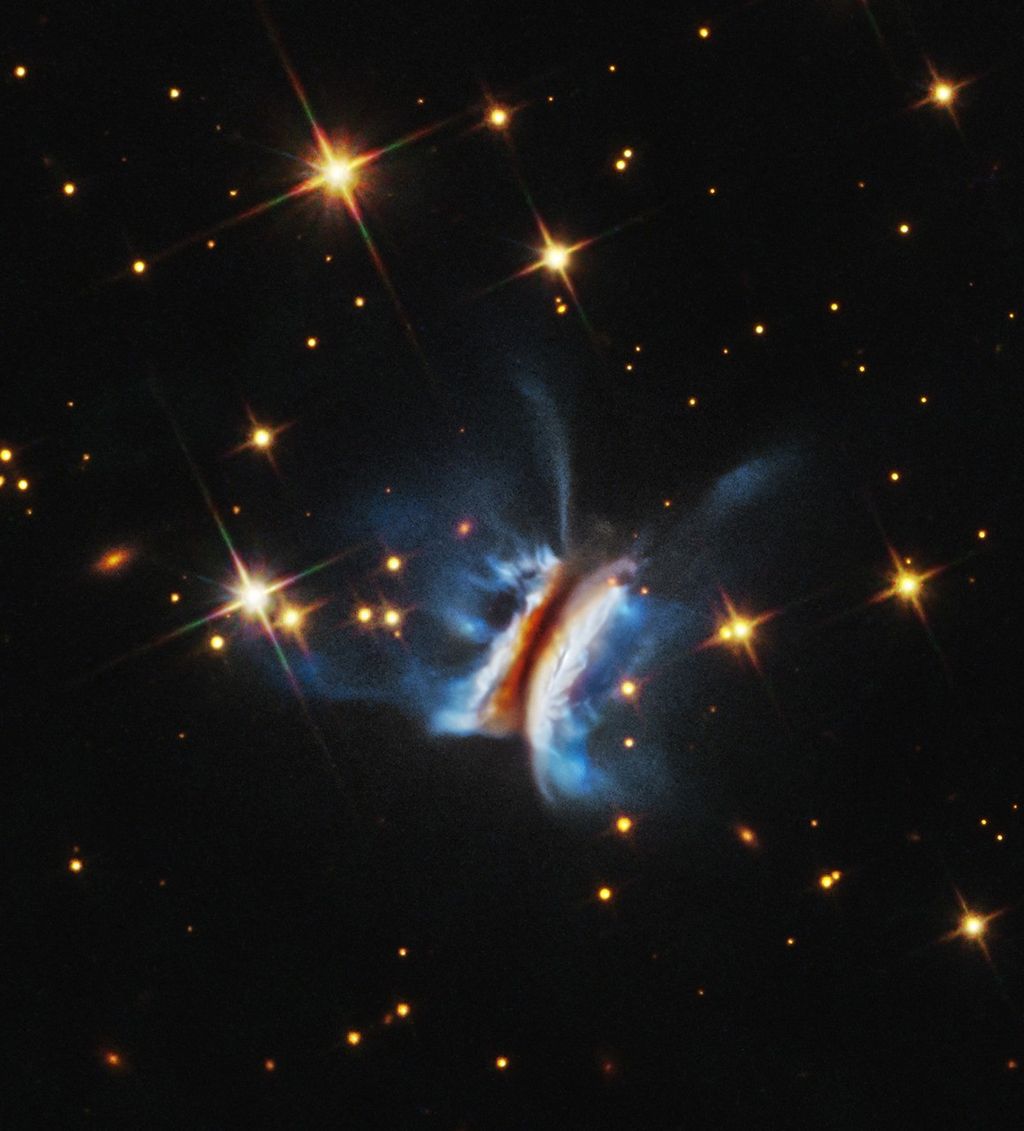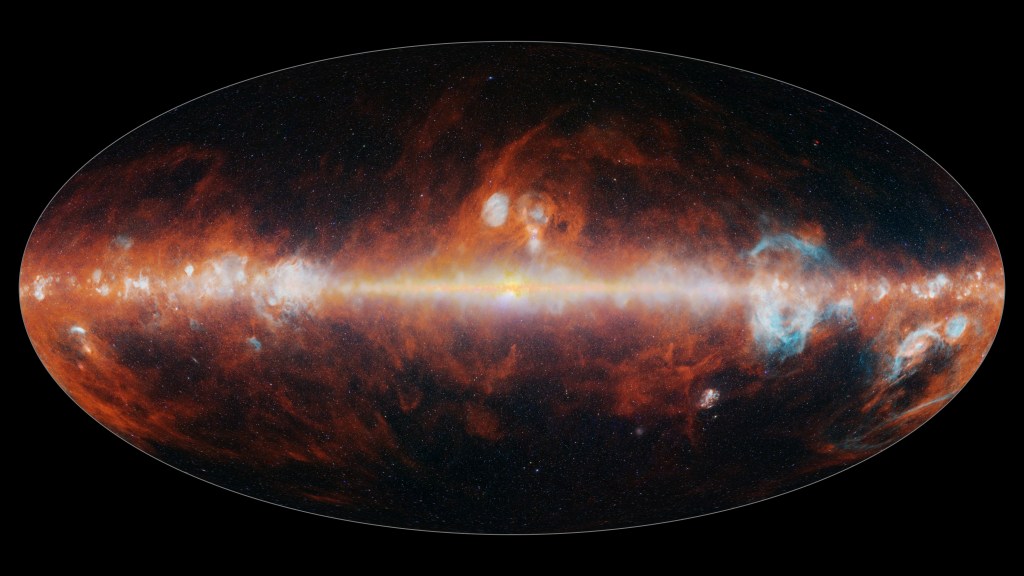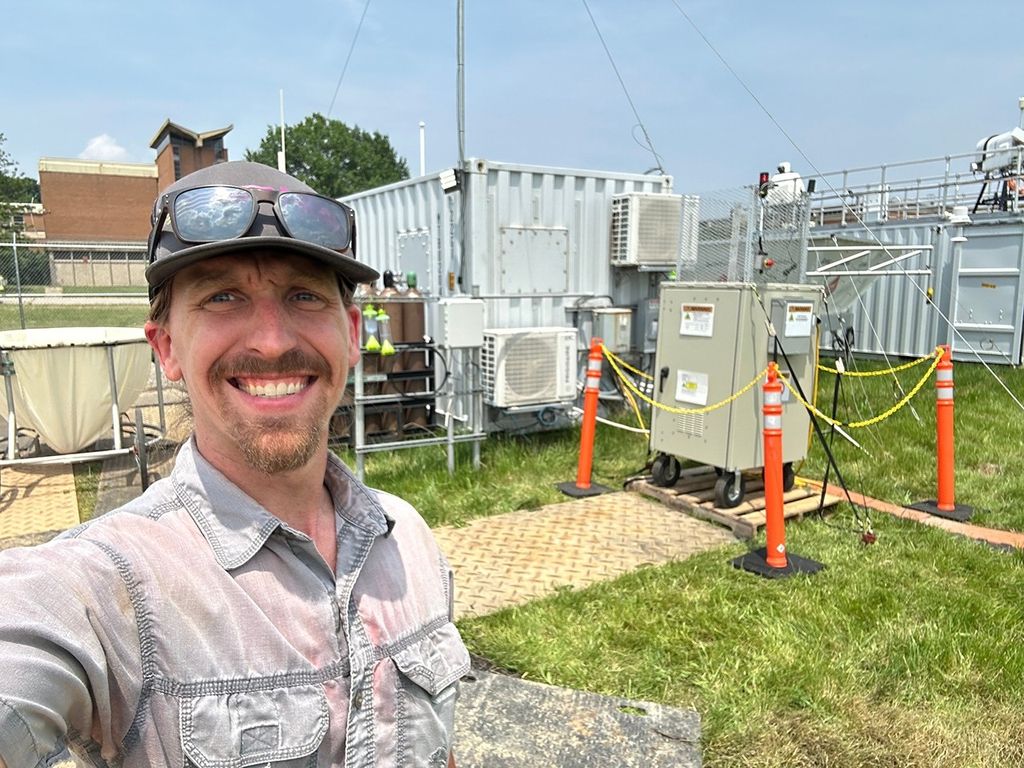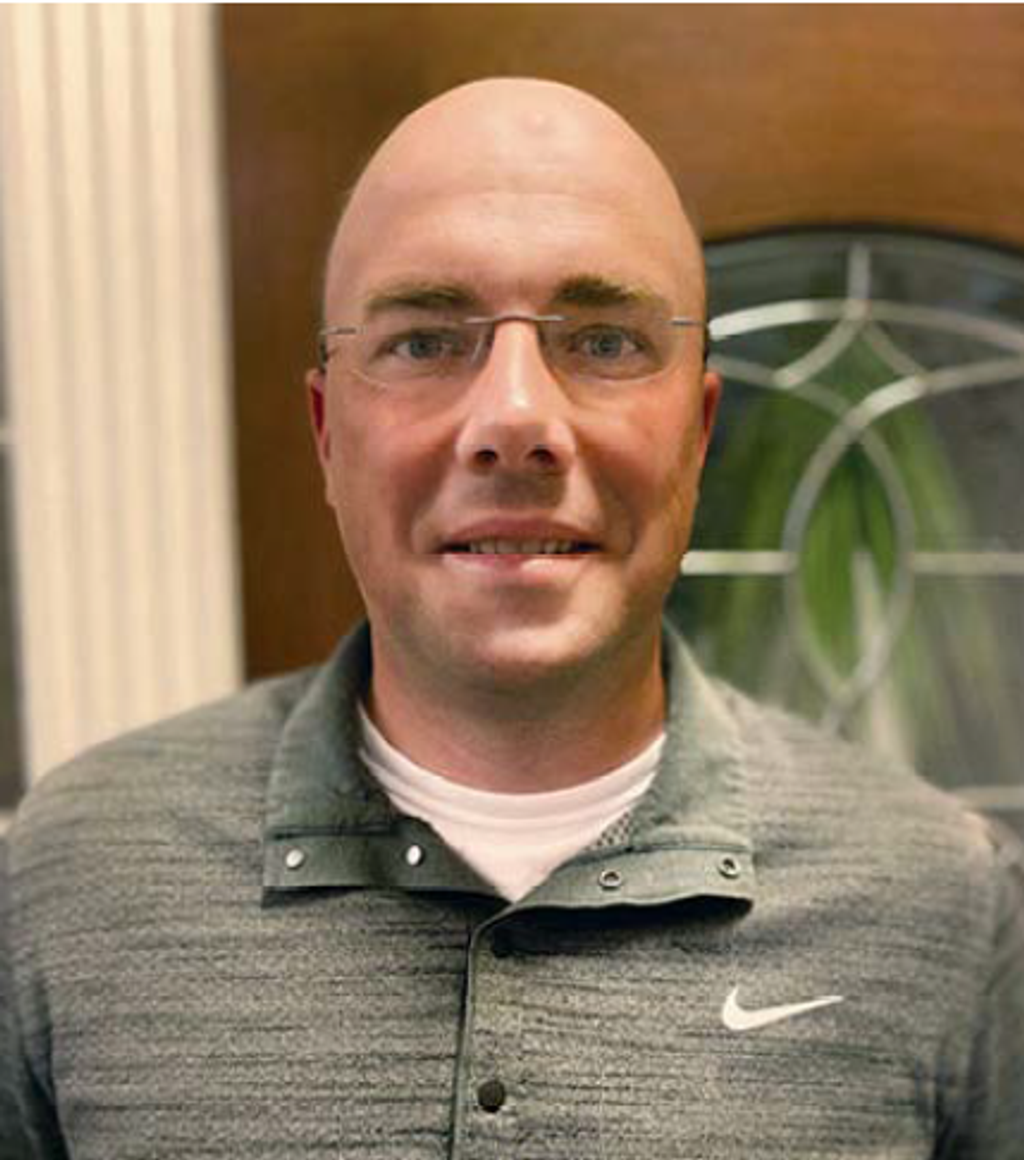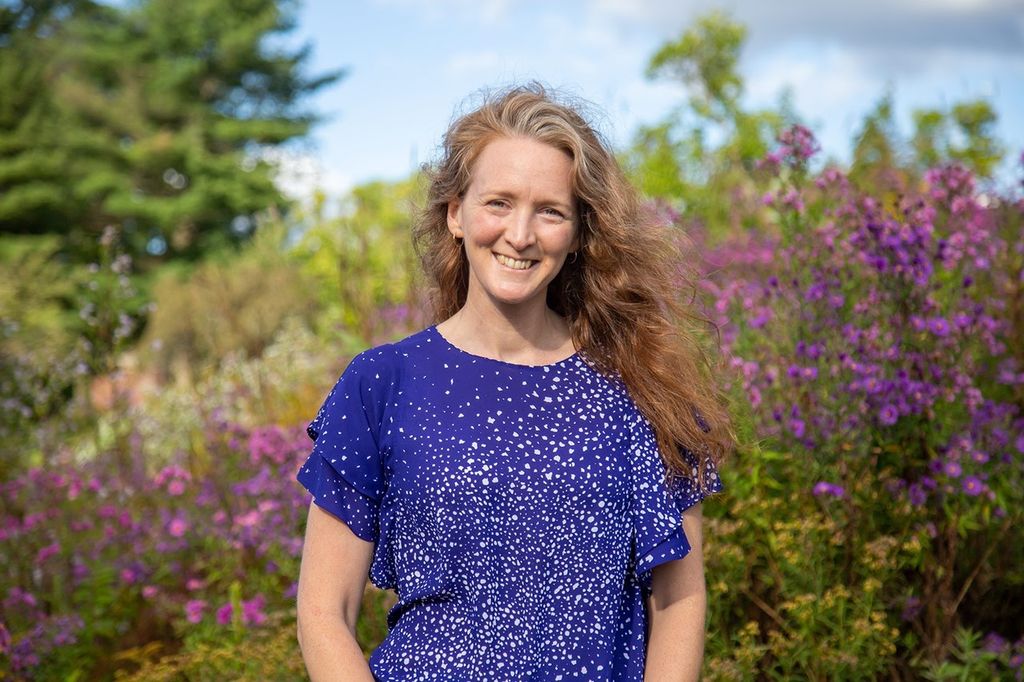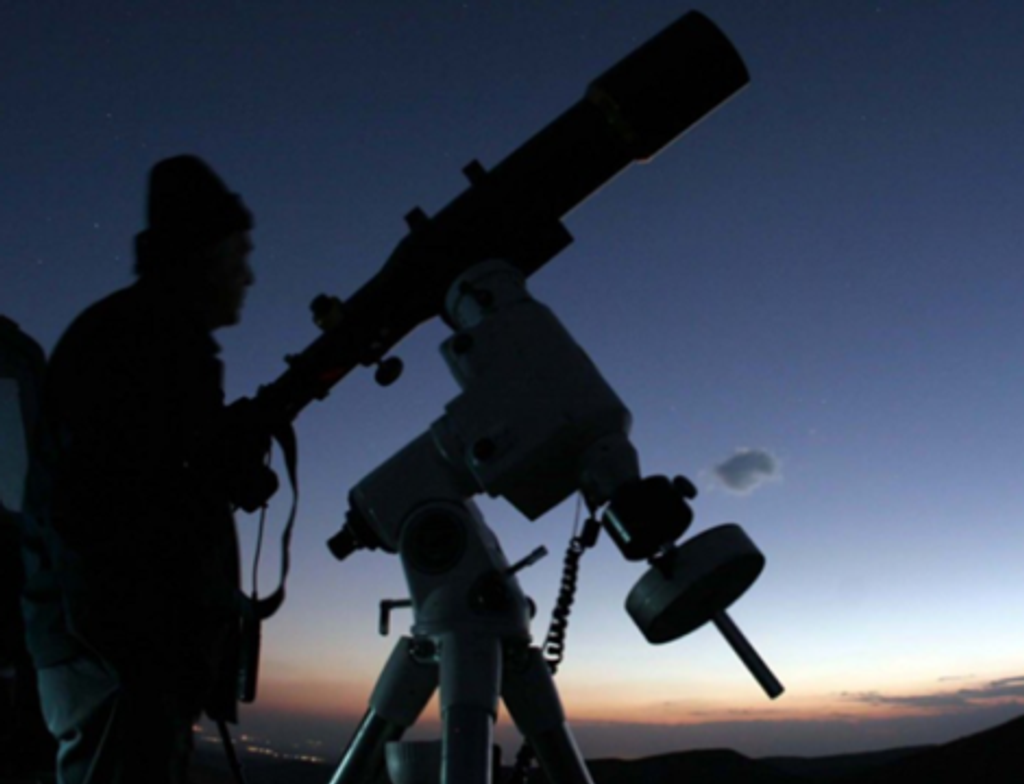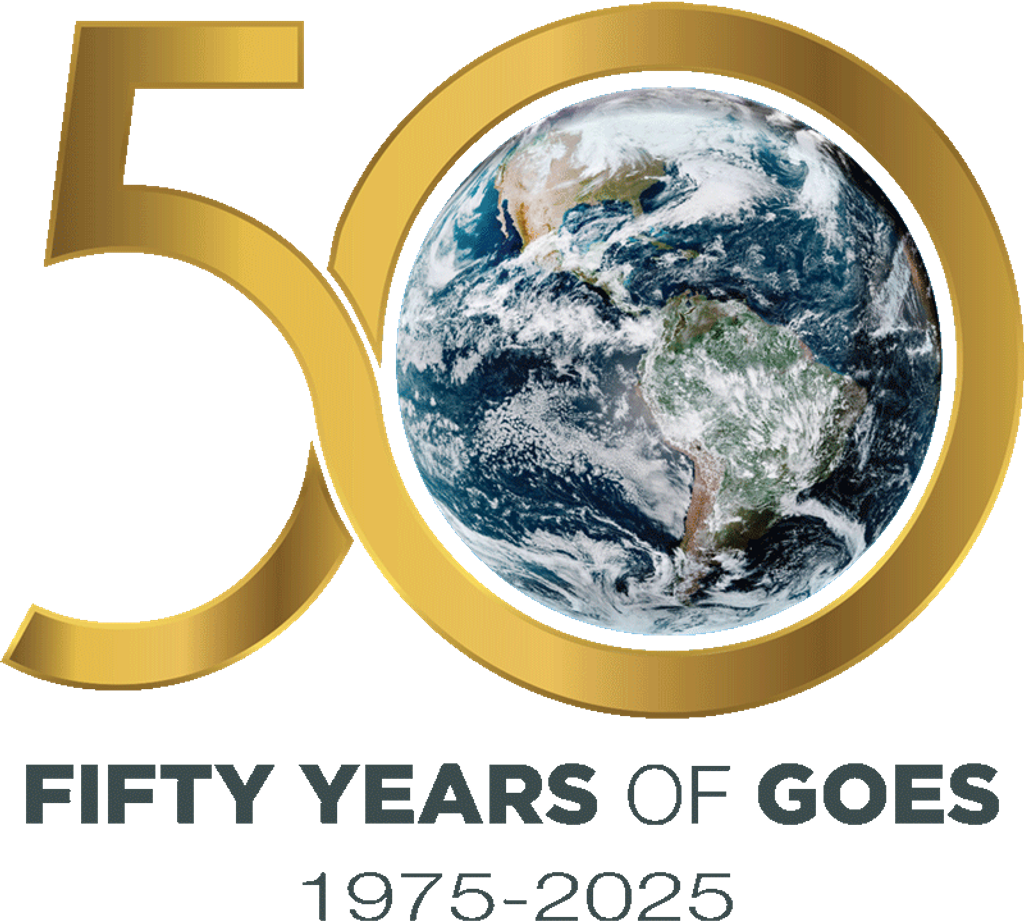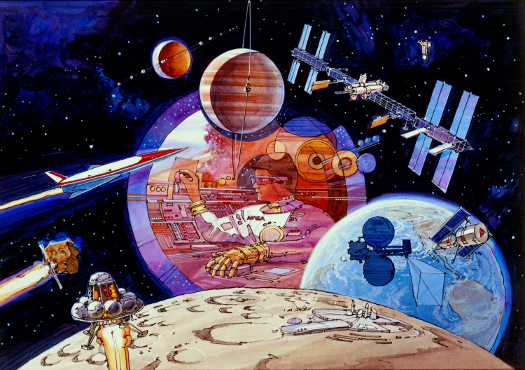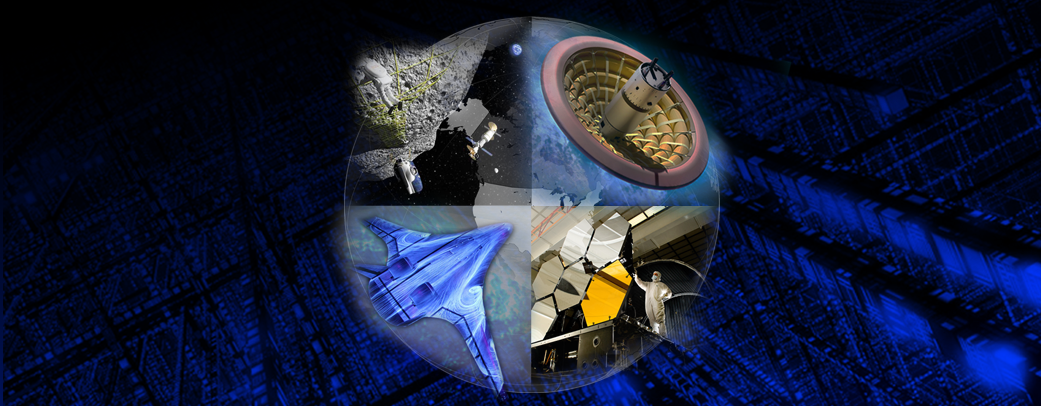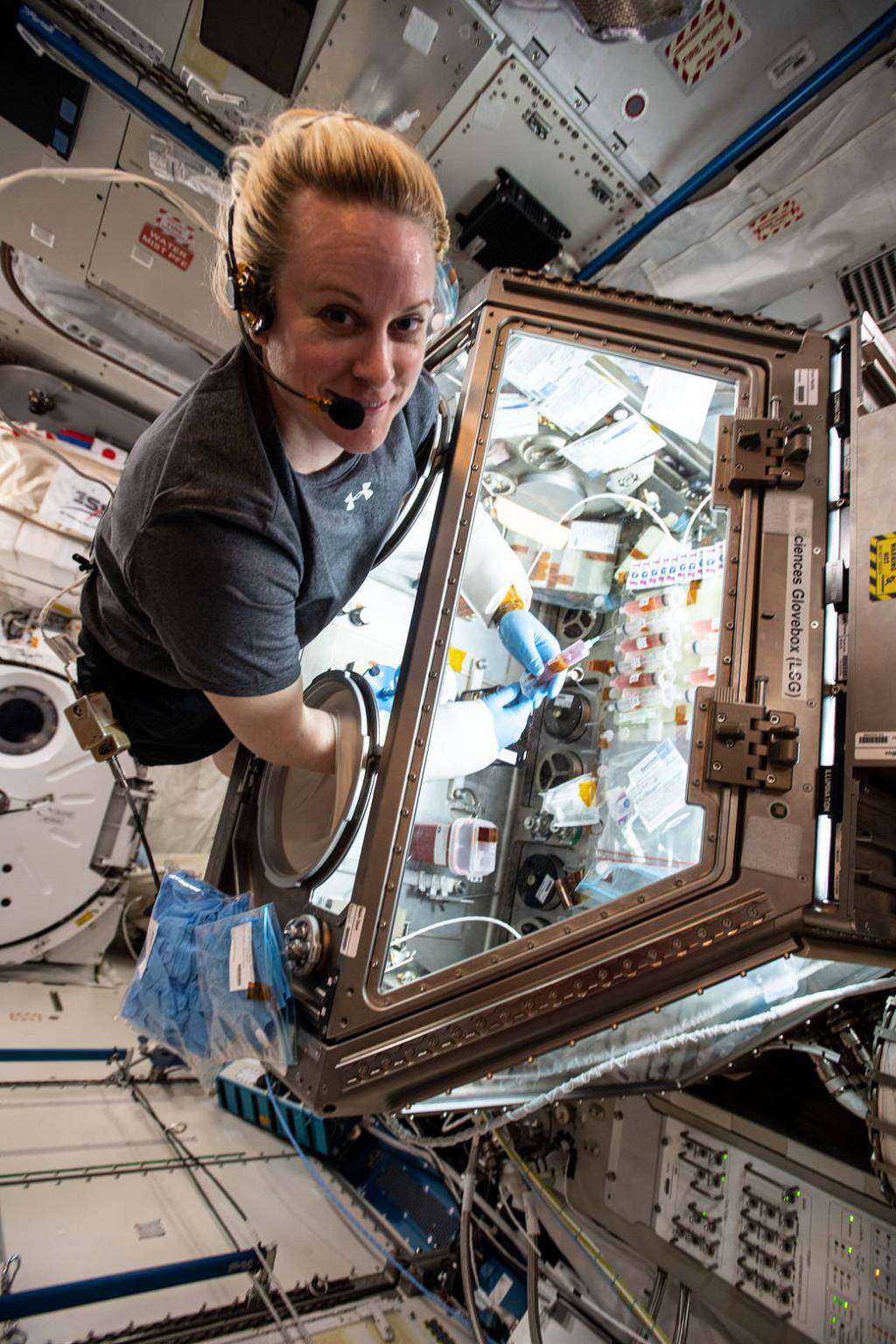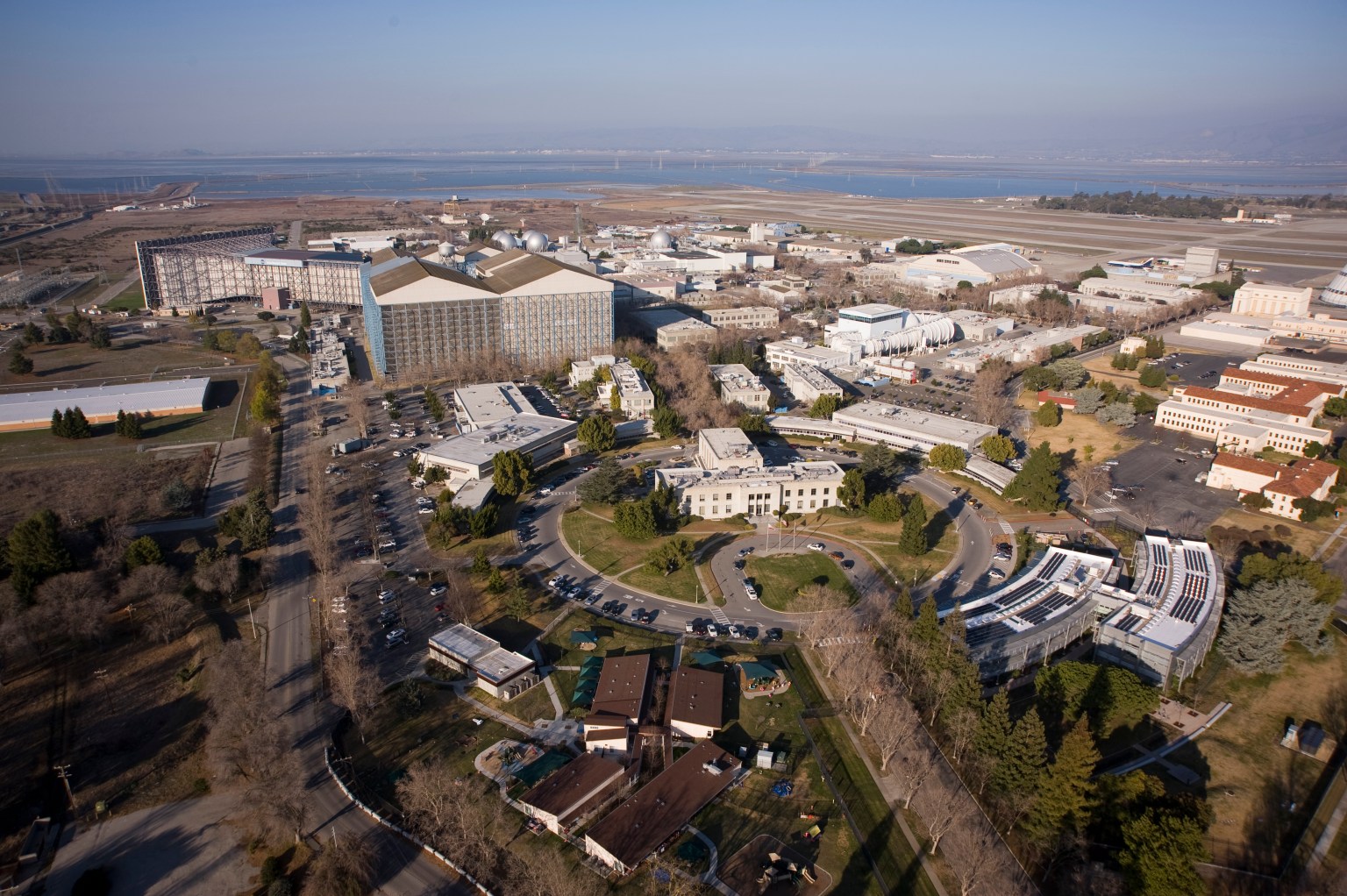2025 Summer Seminar Series
The series consists of 11 seminars highlighting Ames Research Center’s diverse capabilities and expertise in advancing NASA, academia, and commercial space goals.
Rachel Ticknor
From Idea to Mission Concept
Tuesday, June 24 at 11:00AM Pacific Daylight Time
Join online at Teams link: https://go.marqui.live/Pl9aqK5
Abstract:
The NASA Ames Mission Design Center (MDC) is a multi-disciplinary team that employs concurrent engineering approaches for early-stage mission formulation. Studies are developed using the Concept Maturity Level (CML) framework, an approach like the Technology Readiness Level (TRL) method used to assess technology maturity. We support development of Planetary science, Earth science, Astrophysics, Heliophysics, Technology Development, and Exploration missions throughout the solar system. An overview of our mission formulation approach will be presented followed by a case study to showcase how the CML framework is utilized to mature a Mars mission concept. The CML framework facilitates discussions of concept maturity, provides a basis for improved concept development practices, and helps establish reasonable expectations based on the maturity of the concepts in consideration.
Biography:
Rachel Ticknor is a systems engineer with a background in mechanical engineering, aerospace systems engineering, control of aerospace systems, and design for manufacturing. Currently she supports the MDC as a systems engineer with a focus on launch vehicles, flight systems, flight dynamics, and mechanical engineering. In addition, she develops custom analysis tools to facilitate mission concept maturation. Mission concept studies span Earth Science, Planetary Science, Astrophysics, Heliophysics, and technology demonstration missions. Previously Rachel managed the Spaceshop rapid prototyping lab, overseeing its operations and conducting research into innovative materials and applications of additive manufacturing, served as the lead mechanical engineer for the PY-4 mission (a four-cubesat swarm of PyCubed-based spacecraft), and held roles as a mechanical and Attitude Determination and Control Systems (ADCS) engineer for the Payload Accelerator for CubeSat Endeavors (PACE)-1 and PACE-2 missions, where she co-led the mechanical sub-team for PACE-2.
E. Lara Lash
Painting a Picture of Pressure
Thursday, June 26 at 11:00AM Pacific Daylight Time
Join online at Teams link: https://go.marqui.live/uqaKP6D
Abstract:
What do launch vehicles, aircraft, reentry capsules, and flight simulations all have in common? They need wind tunnel data to work! The need to test in wind tunnel facilities will not disappear soon, but in order to develop better computational tools (CFD) and design the next stage of rockets and space vehicles alongside aircraft, more advanced experimental techniques are required. At NASA Ames, the unsteady pressure-sensitive paint (uPSP) team has been developing the technology from small-scale benchtop to a useful and innovative system that leverages the Ames Unitary Plan Wind Tunnel and the NASA Advanced Supercomputing Division, also located at Ames, to deliver unprecedented data to customers. Building off advancements in optical access to wind tunnel models, uPSP uses high-speed cameras and high-powered LEDs to fluoresce paint on the model surface to get high spatio-temporal surface pressure data and send it right over to the supercomputer for processing in near-real time. This provides more data faster than traditional pressure transducers can provide and with greater accessibility. It’s not CFD, it’s PSP!
Biography:
Dr. E. Lara Lash is an aerospace engineering researcher in the Experimental Aero-Physics Branch at NASA Ames. She leads the unsteady pressure-sensitive paint (uPSP) development, which seeks to advance the uPSP technology for new applications and scale the system for use across NASA wind tunnels. She has led the team for two years overseeing advancements in data acquisition, data transfer and management, and data processing, leading the development of connecting the Ames Unitary Plan Wind Tunnel facility to the NASA Advanced Supercomputing Division to leverage existing high-end computing capabilities. Prior to leading the team, she interned with Nettie Roozeboom in the summer of 2019 and subsequently worked on the team to advance paint calibrations and perform research experiments. She is also the Ames Center Liaison for the Transformative Tools & Technology group under the Aeronautics Research Mission Directorate.
Dr. Lash is also the recipient of the 2024 NASA Early Career Achievement Medal and an Honorable Mention for the 2023 NASA Software of the Year Award. She holds a B.S. in Mechanical Engineering and an M.S. and Ph.D. in Aerospace Engineering.
Grace Belancik
Clean Air from LEO to Mars
Tuesday, July 8, at 11:00AM Pacific Daylight Time, Syvertson Auditorium N201
Join online at Teams link: Join the meeting now
Abstract:
When humans spend extended periods in enclosed environments, such as in space stations, lunar habitats, or journeys to Mars and beyond, they require a means to control the environment. For example, products of respiration like carbon dioxide and water, or any trace contaminants from various sources must be removed. Therefore, highly reliable, highly efficient life support systems are essential to maintaining a healthy atmosphere. Several new air revitalization technologies are in development that span the breadth of physico-chemical methods and are unique from heritage systems. The technologies designed, built, and tested by the Air Revitalization Team in the Bioengineering Branch at ARC include utilizing liquid sorbents to capture CO2 or humidity in microgravity, solid sorbent CO2 storage and compression, 1-step capture of CO2 and conversion to water, and cold surface-driven CO2 capture, purification, and compression. The development of these technologies and their capabilities minimizing mass, power, volume, and spares for spacecraft from low earth orbit to Mars will be discussed.
Biography:
Grace Belancik is the Air Revitalization team lead in the Bioengineering Branch at Ames Research Center at NASA. Her research focuses on environmental control and life support systems, specifically research and development of new technologies for air revitalization to be used in future crewed missions on spacecraft, stations, and surface habitats. Her development projects span the breadth of physico-chemical methods of capturing and managing CO2 as well as other air constituents including water vapor and trace contaminants. Grace is also on the steering committee of the International Conference on Environmental Systems. She has been at NASA 16 years, and at ARC since 2016. She has a bachelor’s degree in chemical and biomolecular engineering from the Georgia Institute of Technology and is about to have a master’s degree in chemistry from San José State University.
Keith Peterson
Rocket Lab’s Mission to Venus
Thursday, July 10 at 11:00AM Pacific Daylight Time, Syvertson Auditorium N201
A
Due to unexpected circumstances, this seminar is postponed
Joey Mercer
Airspace Integration for US Forest Service
Tuesday, July 15, at 11:00AM Pacific Daylight Time, Syvertson Auditorium N201
Abstract:
In their aviation strategic plan, the US Forest Service (USFS) establishes the goal to “Explore, Evaluate, and Adopt Emerging Technology to Achieve the Aviation Mission More Effectively”. Researchers in Ames’ Human-Systems Integration Division have been working closely with USFS over the last six years to help progress towards that goal. At the heart of USFS aviation is communication, coordination, and deconfliction – seemingly simple concepts, but very difficult to execute in the unique operating environments typical of wildland firefighting. Today’s air tactics, when consisting only of crewed assets are plenty complicated as-is, and while the integration of uncrewed assets brings substantial benefits, sharing airspace between crewed and uncrewed assets can also bring new challenges to the firefighter. The path to modernization has some challenges, many of which disrupt the human operator’s ability to maintain proper awareness of their task and the various contextual factors they juggle. Casual conversation will highlight the complexities of decision-making for select areas of USFS aviation, and the research activities conducted to-date that have helped enhance the mission capabilities and airspace integration for USFS aviation.
Biography:
Joey Mercer is a Research Psychologist working in the Airspace Operations Laboratory within the Human-Systems Integration Division at NASA’s Ames Research Center. He has received degrees in Experimental Psychology and Human Factors from the University of Idaho and San Jose State University. He has investigated human-factors issues related to advanced air traffic management concepts for several years, and more recently, served as the principal investigator for the Scalable Traffic Management for Emergency Response Operations (STEReO) activity. A collaboration among Ames, Glenn and Langley researchers, the STEReO activity established key partnerships within the wildland firefighting community and developed several prototypes, one of which (the UASP-kit), is still in the hands of UAS pilots at USFS and CAL FIRE. Currently, he is the chief engineer for NASA’s Advanced Capabilities for Emergency Response Operations (ACERO) project.
Lucas Braydwood
Ensuring NASA’s Quantum-Readiness
Thursday, July 17, at 11:00AM Pacific Daylight Time, Syvertson Auditorium N201
Abstract:
Quantum technology has seen enormous growth over the last decade with large efforts across government, academia, and industry geared toward maturing quantum technology. Quantum technology, including computing, has great promise but also narrow use cases, requiring us to be judicious with its application and engendering a host of hybrid methods that combine both quantum and classical techniques. This talk will describe the current state of quantum information technology and what it is and is not capable of currently and in the near future. Our efforts at NASA have focused on both the development of this technology and identification of places where NASA work could potentially benefit when this technology has matured. The talk concludes by describing this process of making an application quantum-ready and what the roadmap for potential quantum utility looks like.
Biography:
Lucas Braydwood (Né Brady) is a researcher studying quantum algorithms and quantum computing at NASA’s Quantum Artificial Intelligence Lab (QuAIL). His research interests cover a wide range of quantum algorithms with a focus on quantum optimization algorithms, quantum optimal control, and quantum machine learning. He has been a member of the QuAIL team since 2022 where he has worked to apply quantum techniques to NASA problems of interest, creating quantum-ready solutions and preparing the problem formulations for future quantum integration. He received his PhD in Physics from the University of California, Santa Barbara and completed a postdoc at NIST as part of the Joint Center for Quantum Information and Computer Science.
Kenneth Cheung
Robotic Space Infrastructure
Tuesday, July 22, at 11:00AM Pacific Daylight Time, Syvertson Auditorium N201
Abstract:
Recent advances in mechanical metamaterials offer high-performance structural systems with a modular building block strategy, whereby simple components provide economical scaling. We are also seeing the realization of coordinated multi-agent robotics’ potential to robustly solve complex logistics problems with collections of simple machines. What if these technologies could be combined such that adaptable, reconfigurable structures could evolve through traditional space mission lifecycles from orbital operations to Lunar or Martian surface applications?
The Coded Structures Laboratory at Ames Research Center has demonstrated scalable methods for manufacturing high-performance structures and materials by reversible robotic assembly. This enables scalability and novel system behaviors previously difficult to achieve with conventional methods. This approach was applied to shape morphing aerostructures through the Mission Adaptive Digital Composite Aerostructures (MADCAT) Project, and to space infrastructure through the Automated Reconfigurable Mission Adaptive Digital Assembly (ARMADAS) Project. Recent project activity includes free flight testing of a span-wise twist morphing wing aircraft following successful wind tunnel experiments.
Biography:
Kenneth Cheung serves as a Principal Investigator for the Coded Structures Laboratory (CSL) and technical lead on advanced materials, robotics, and manufacturing. His group develops algorithmic structural systems and robotics to enable mission-adaptive autonomous infrastructure for aeronautical and space systems.
Before joining NASA, Kenny received his PhD from MIT, where he demonstrated that mechanical metamaterial design and manufacturing strategies that create record-setting stiff, strong, and lightweight materials and new kinds of robots. His work includes papers and patents on topics from composite manufacturing systems to biomolecular fabrication algorithms and surgical robots. He’s particularly fond of the use of rapid prototyping to test ideas that challenge design conventions, based on physical first-principles analyses.
Kenny has long participated in the global fab lab network, a grassroots technology education movement based on the premise that anyone can design and produce technological solutions regardless of formal education. He has helped install rapid prototyping equipment in labs across most continents and taught workshops on community wireless networking, self-replicating prototyping machines, and environmentally friendly fiber composite materials.
Mark Fonda
Local Boy Career Perspective and Insights
Tuesday, July 29, at 11:00AM Pacific Daylight Time, Syvertson Auditorium N201
Link to Teams meeting: Join the meeting now
A
Biography:
Mr. Fonda has made significant contributions over his 45-year career as both a research scientist and his subsequent 23 years serving in a managerial role as member of the Ames family enabling several NASA projects and programs. Mr. Fonda started his career at Ames in 1980 as a contractor and later becoming a Civil Servant researcher in 1989. Mr. Fonda has a sustained service record of leadership contributions and achievements leading to the success of many research projects and flight missions, while also enabling careers of many individuals in both Life Science and Space Science and Astrobiology Divisions. Mr. Fonda will share today some of his career experiences and forks in the road career choices he has made while working at Ames as a research scientists, Project Manager and his many years serving in Branch and Division line management roles while also providing some insights he has gained over his career.
Mark Ditzler
Molecular Evolution at the Dawn of Life
Thursday, July 31, at 11:00AM Pacific Daylight Time, Syvertson Auditorium N201
Link to Teams meeting: Join the meeting now
Abstract:
Every known organism evolved from a shared, ancestral community that appeared on Earth about four billion years ago. It may seem an impossible task to see how evolution proceeded billions of years ago, but both experimental and computational approaches serve as surprisingly effective telescopes into the distant past. Using a combination of in vitro evolution and structural bioinformatics we begin to bring into focus the details of early biochemistry. In vitro evolution techniques reveal how RNA can evolve independent of modern biology, and we leverage this to understand how increasing structural complexity drives RNA evolution. Our analysis of in vitro evolution experiments strongly suggests that elaboration on conserved core structures is a preferred mechanism in RNA evolution. This tendency of RNA to retain core structures during evolution allows us to leverage modern RNA structures to infer the structures and functions of ancestral RNAs. We use both sequence and structural information from modern RNAs to reconstruct ancient, ancestral RNAs and examine their structure and function. I will discuss the results of our experimental and computational approaches and what they tell us about the evolution of RNA at the dawn of life.
Biography:
Mark Ditzler coordinates the Center for the Emergence of Life at NASA Ames Research Center. His research focuses on the roles of nucleic acids and proteins in the origin and early evolution of life. He has experience applying sophisticated experimental and computational techniques to study the evolution, structure, and conformational dynamics of functional nucleic acids and protein-nucleic acid complexes. His research has included the application of in vitro evolution, high-throughput sequencing, bioinformatics analysis, biochemical structure probing, mass spectrometry, and molecular dynamics simulations. Dr. Ditzler received a BS in biophysics from the University of Illinois and a Ph.D. in biophysics from the University of Michigan. He also completed postdoctoral training at the University of Missouri before accepting his current position at NASA Ames in 2012.
Nathan Benz
Distributed Space Traffic Monitoring
Tuesday, August 5 at 11:00AM Pacific Daylight Time
Abstract:
As the number of active satellites and orbital debris in Low Earth Orbit (LEO) continues to grow rapidly, space traffic monitoring has become a critical component of space sustainability and safety. The increasing congestion poses a heightened risk of collisions, threatening not only the functionality of operational spacecraft but also the long-term viability of the orbital environment due to the potential for cascading debris-generating events. Effective space traffic coordination is essential to mitigating conjunction events by enabling timely data sharing, collision avoidance planning, and cooperative maneuvering among satellite operators.
The integration of small spacecraft into space situational awareness architectures could significantly enhance the accuracy, responsiveness, and resilience of orbital monitoring systems. The Starling mission recently demonstrated how distributed swarms of small spacecraft can enhance existing space situational awareness architectures, including on-orbit detection and autonomous coordination between different owner-operators of spacecraft swarms and constellations.
Biography:
Nathan Benz is currently group lead of Core Avionics and Software Technologies (CAST), part of the Intelligent Systems Division the project manager of the Starling extended mission. He holds a M.S. degree in Computational and Mathematical Engineering from Stanford University and a B.S. in Mechanical/Aerospace Engineering from Rochester Institute of Technology.
Lorien Wheeler
Risk Rocks: Assessing Asteroid Threats
Tuesday, August 12 at 11:00AM Pacific Daylight Time
Abstract:
Asteroid impacts on Earth have the potential to cause substantial damage and pose a notable threat to human populations. They are also one of the few natural disasters that humans can potentially detect and prevent in advance. However, there are many uncertainties in the wide ranges of potential asteroid properties and the high-energy damage physics of large-scale asteroid impacts, which make this a challenging problem. NASA’s Asteroid Threat Assessment Project (ATAP) at Ames Research Center has developed state-of-the-art asteroid damage simulations and probabilistic risk models that evaluate the severity and likelihood of damage that could result from potential impacts. These models and assessments are a key part of NASA’s planetary defense response capabilities and will help inform mitigation and response decisions if an asteroid impact threat is discovered. This seminar gives an overview of asteroid impact threats, the types of damage they can cause, and how the ATAP team helps to assess the level of damage and risk posed by potential impacts to support planetary defense preparedness.
Biography:
Lorien Wheeler leads the Risk Assessment team for the Asteroid Threat Assessment Project (ATAP) at the NASA Advanced Supercomputing Division at Ames Research Center. In this role, she develops physics-based probabilistic models of asteroid entry and damage to evaluate the risks posed by potential impact threats. These impact risk assessments are a central part of national planetary defense response capabilities, supporting NASA’s Planetary Defense Coordination Office (PDCO) and the goals of the National Near-Earth Object (NEO) Preparedness Strategy and Action Plan. She has led risk assessments for numerous hypothetical asteroid impact scenarios to advance national and international planetary defense preparedness, including international Planetary Defense Conference (PDC) exercises, NASA/FEMA interagency planetary defense tabletop exercises (TTXs), interagency technical exercises for the National NEO Action Plan Modeling Working Group (MWG), and close-approach observing campaigns of real asteroids such as 99942 Apophis and 2024 YR4. She has worked at Ames as part of the NASA Advanced Supercomputing Division and Engineering Risk Assessment team since 2008, began work on the ATAP project in 2015, and has led the ATAP Risk Assessment team since joining NASA as a civil servant in 2019.

